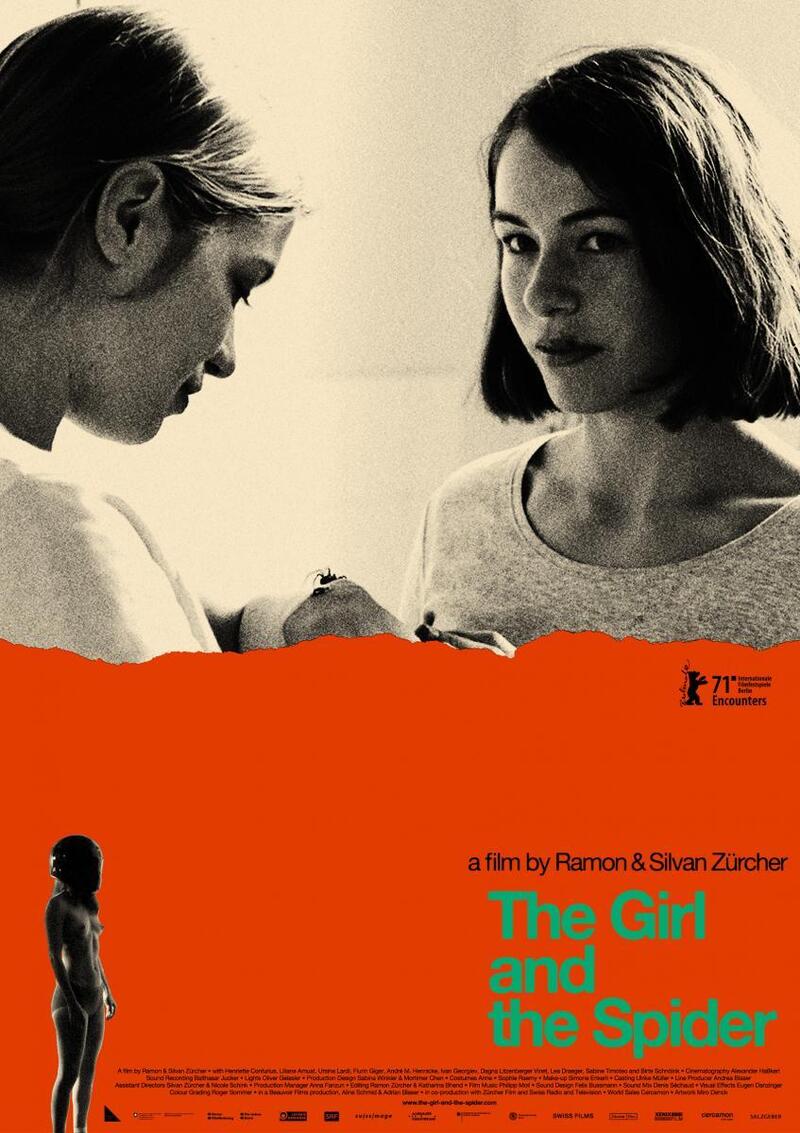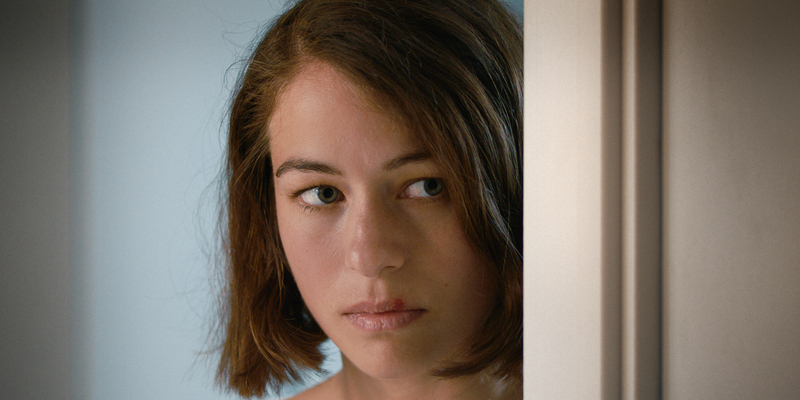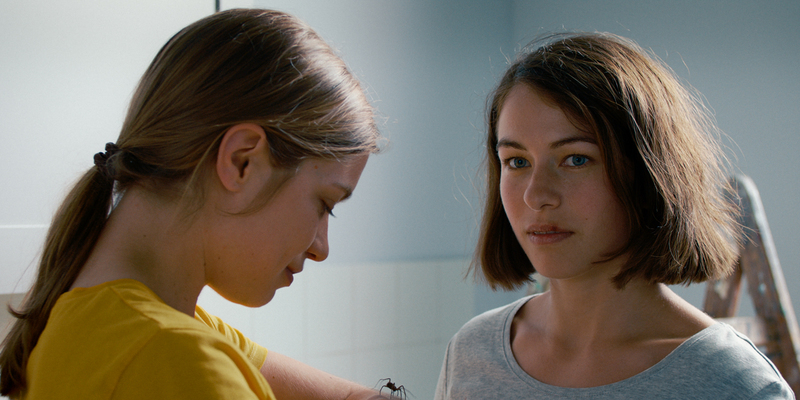
Review by Eric Hillis
Directed by: Ramon Zürcher, Silvan Zürcher
Starring: Henriette Confurius, Liliane Amuat, Ursina Lardi, Flurin Giger, André Hennicke, Ivan Georgiev, Dagna
Litzenberger-Vinet

It's often said that moving home is one of the most stressful
experiences you can endure. That certainly seems to be the case in twin
brothers Ramon and Silvan Zurcher's
The Girl and the Spider. The film plays out across two days in which a young woman is moving
from one apartment to another. The Zurchers fill these two spaces with a
bunch of horny but frosty Central Europeans, which is more often than
not a recipe for cinematic success.

The departing girl is Lisa (Liliane Amuat), leaving behind
roommate Mara (Henriette Confurius). Though the movie never says
as much - this being a film in which very little is clearly articulated
by either its characters or creators - Lisa and Mara's uncomfortable
interactions create the impression of two estranged lovers parting ways.
The decision seems wholly taken on Lisa's part, as Mara behaves in a
manner that suggests she's still game for whatever might have gone down
between them.
The title refers to an anecdote Mara tells about how upset she was as a
little girl when the spider that visited her bedroom every night
eventually disappeared. But Mara is something of a spider herself, and
the more we learn about her, the clearer it becomes that Lisa is fleeing
her web before she finds herself so entangled that she can't escape.
With her hypnotic blue eyes concealing a sociopath's mind, it seems
nobody can escape Mara's seductive lure. Smitten by Mara's charms are a
young handyman (Flurin Giger), Lisa's new single mother
neighbour, a young girl who works in a coffee shop across the street
from her apartment, and perhaps even Lisa's mother Astrid (Ursina Lardi), all of whom gaze longingly at the young woman, almost turned into
zombies by the power of her allure.

Various relationship triangles form within the Zurchers' drama, but
perhaps the most curious is that between Mara, Lisa and Astrid. Lisa and
her mother don’t seem the closest, culminating in a moment of
heartbreaking cruelty. On the other hand, Mara and Astrid laugh at one
another's jokes, and it seems Astrid sees in Mara the young woman she
may have once been herself, or perhaps wishes she had the courage to
become.
Despite being confined to a handful of rooms, the Zurchers manage to
keep their film visually alive. Their camera is always focusing in on
small details, often the hands of Mara, who is always poking holes in
objects and touching things she shouldn't. The film visualises the many
stories Mara seemingly makes up at the drop of a hat (like many
sociopaths, she's developed a knack for storytelling). The recurring use
of two pieces of music – Eugen Doga's Gramofon Waltz and a piano cover
of Desireless's Voyage Voyage – add to the curiously Central European
melancholy on display.

There's a lot going on within the walls of the Zurchers' two locations,
so much so that I suspect it would take two or three viewings to fully
wrap your head around exactly what the film is trying to say. There are
several visual parallels - like how Mara's piercing of a styrophone cup
echoes a workman's drill in the street outside and the hole left in the
lip of a flatmate who had a piercing removed – that are clearly meant to
suggest something that I couldn’t quite pick up on a first viewing.
The Girl and the Spider may warrant a return visit; this
is a narrative web that requires a considerable amount of
disentangling.

The Girl and the Spider is on
MUBI UK from June 15th.

